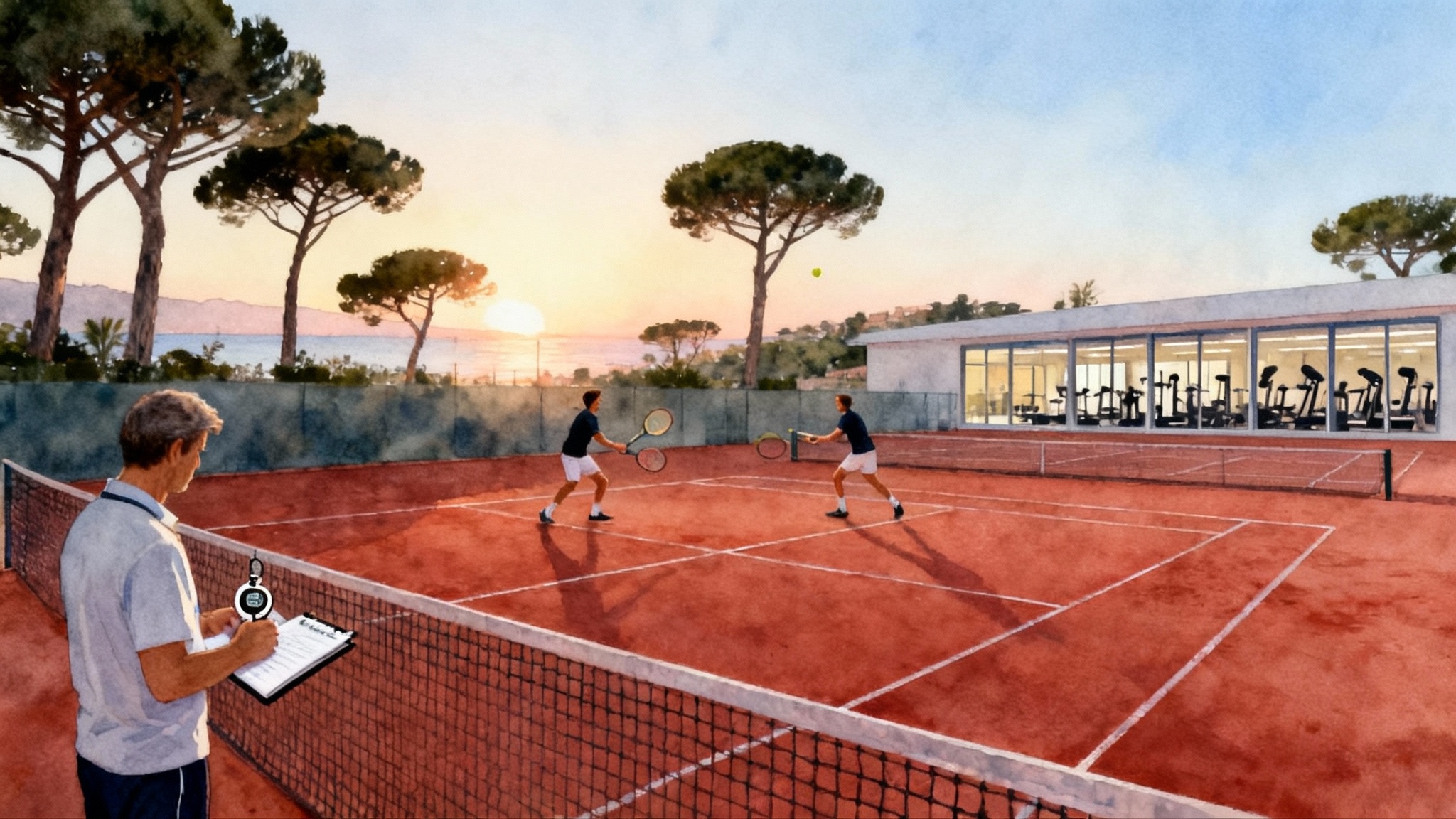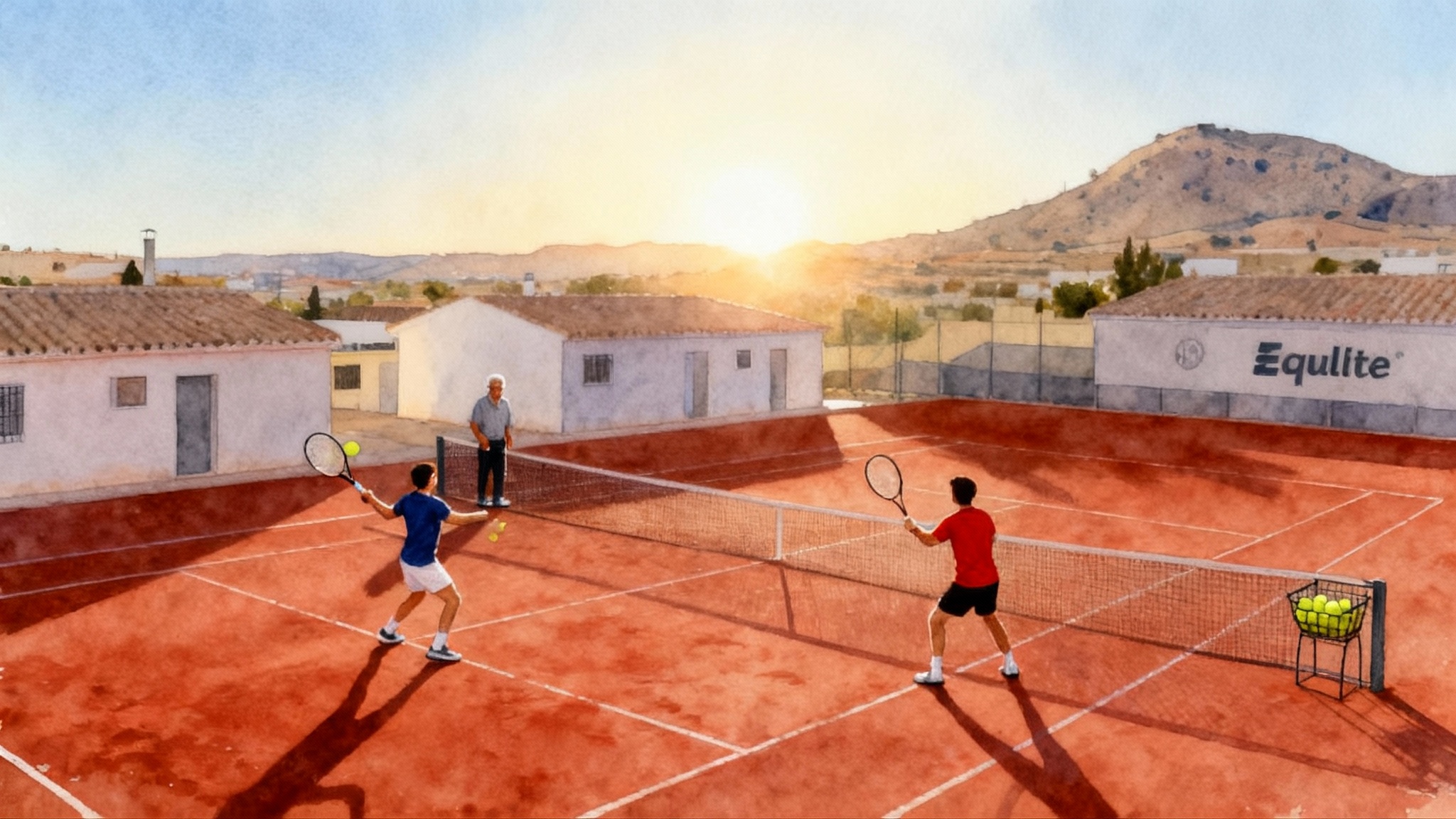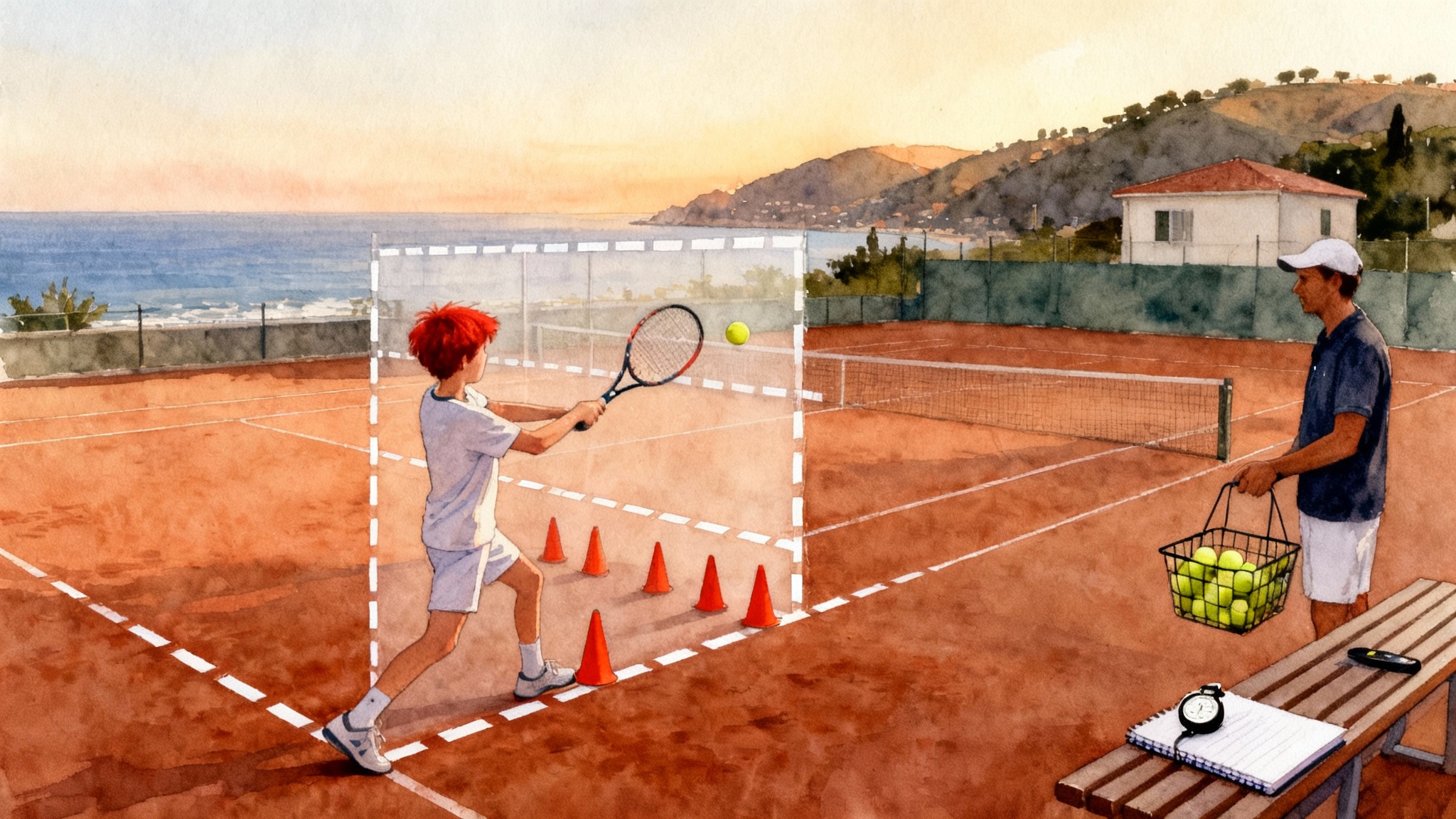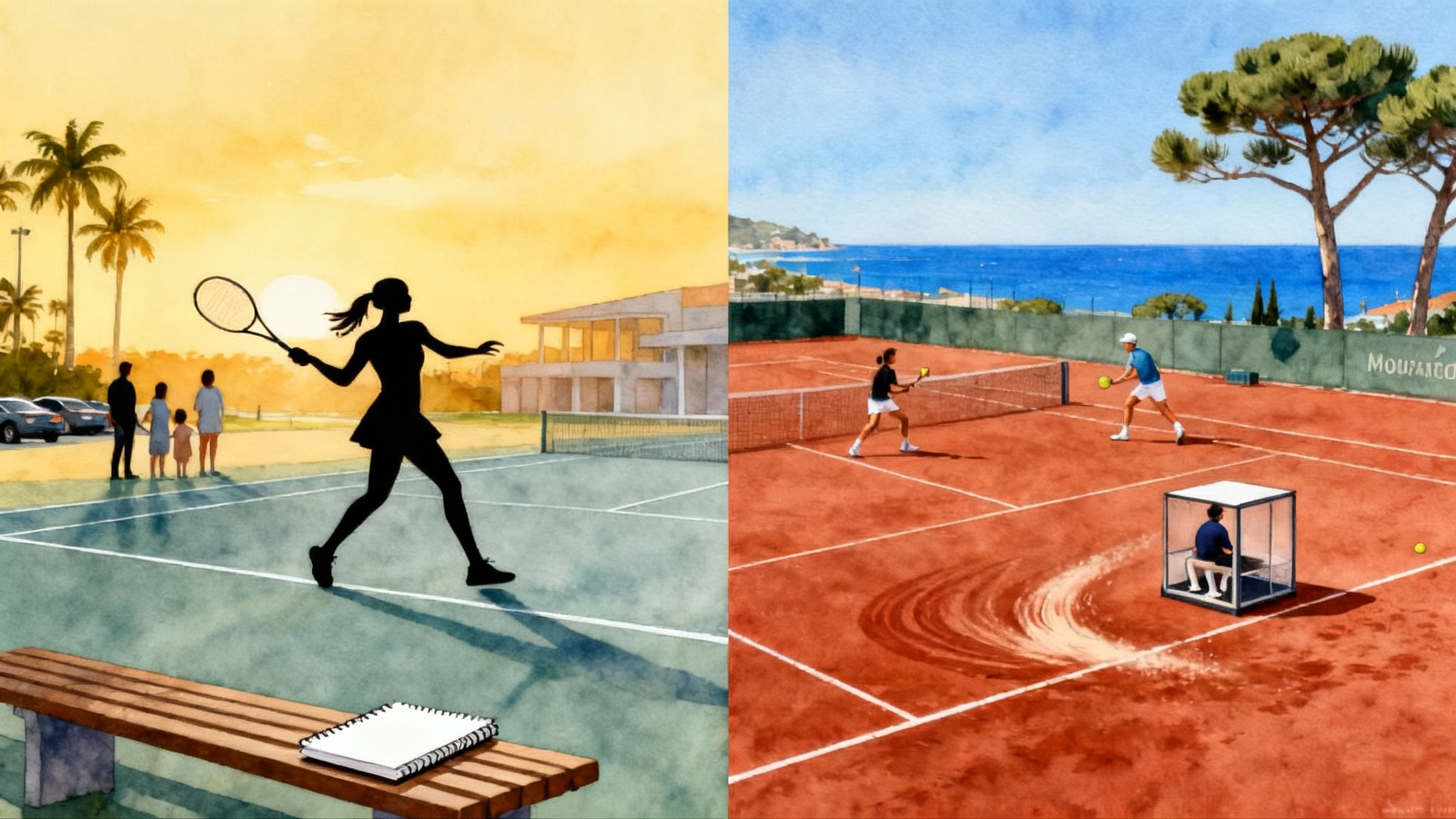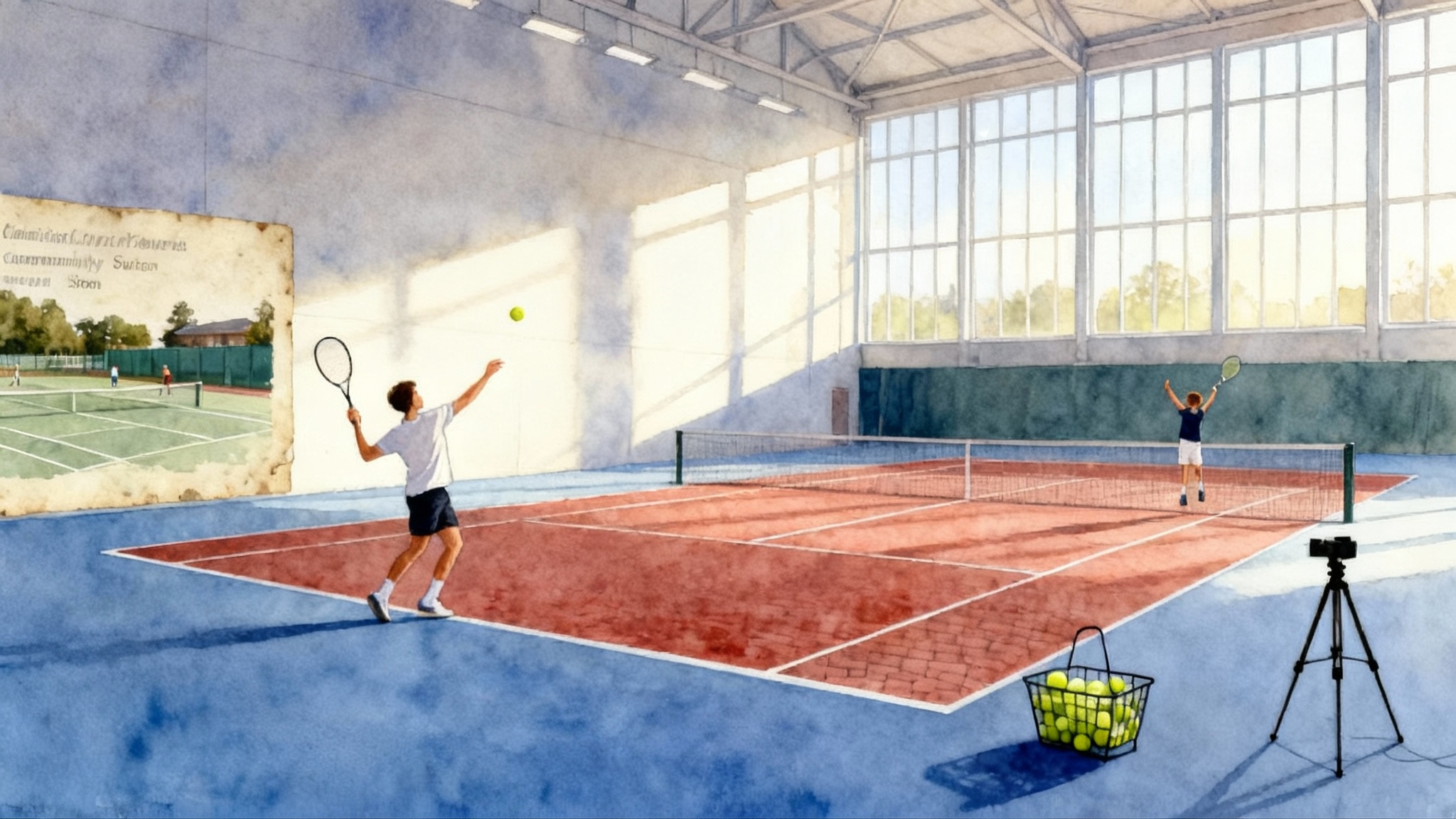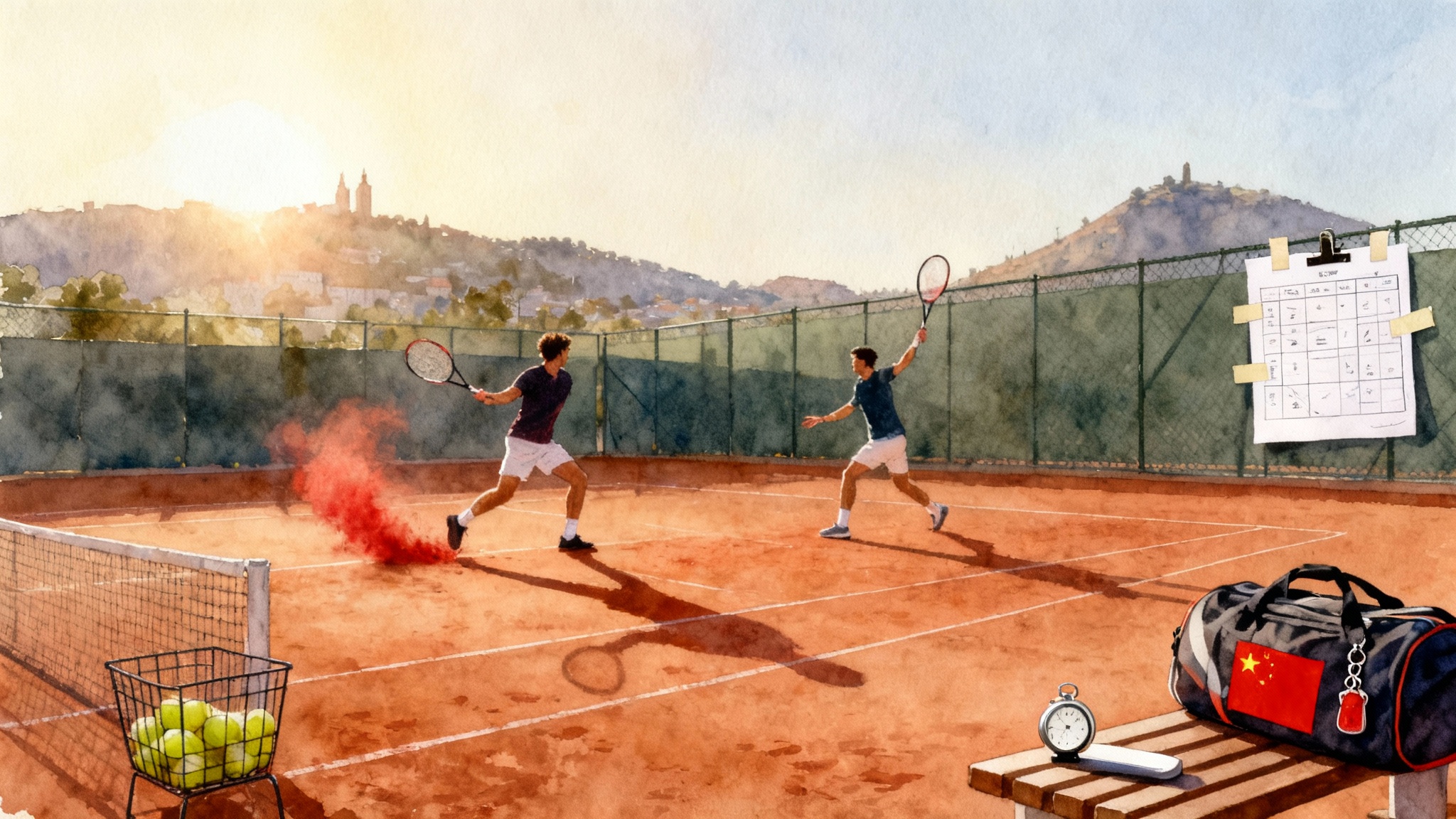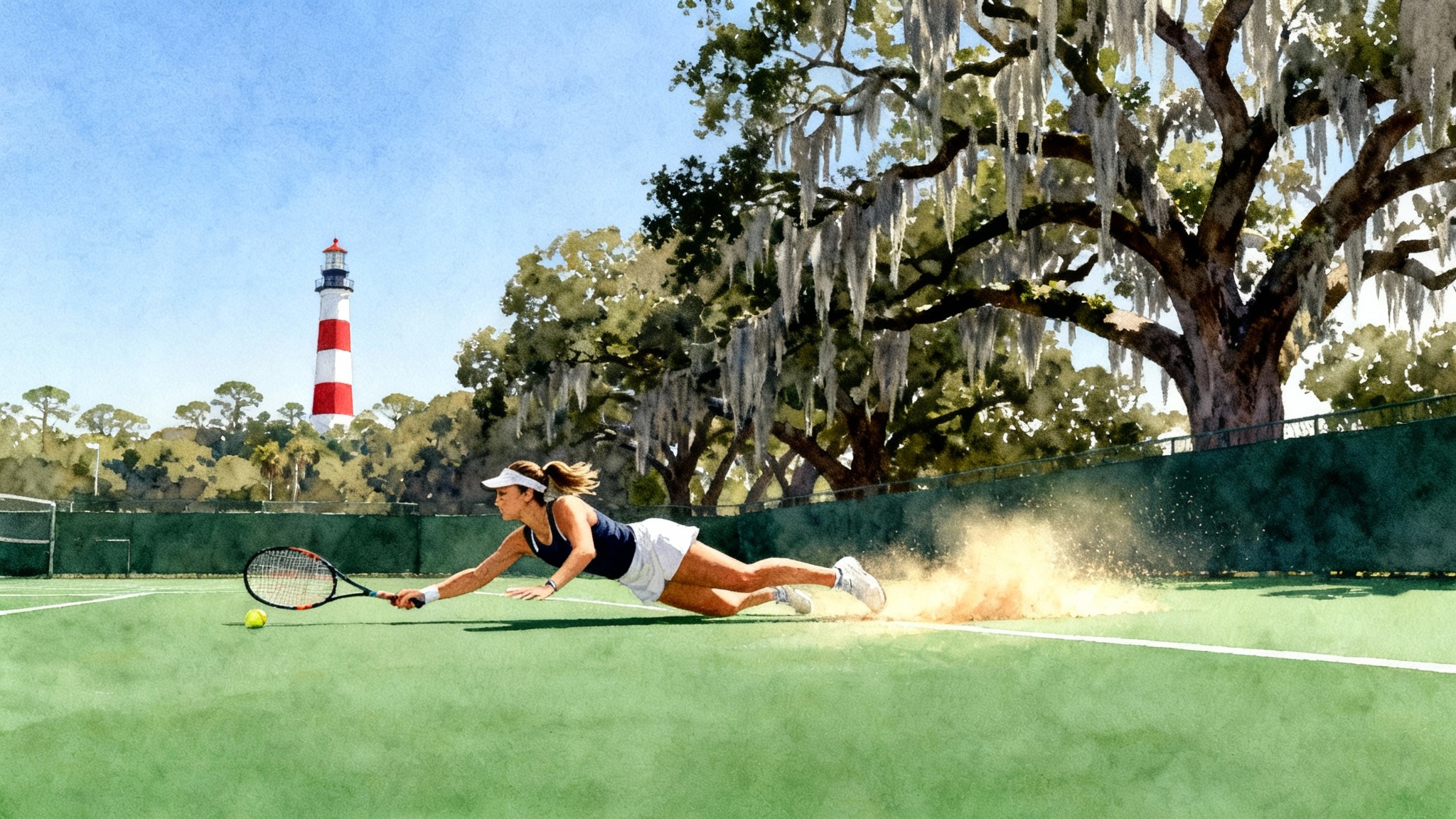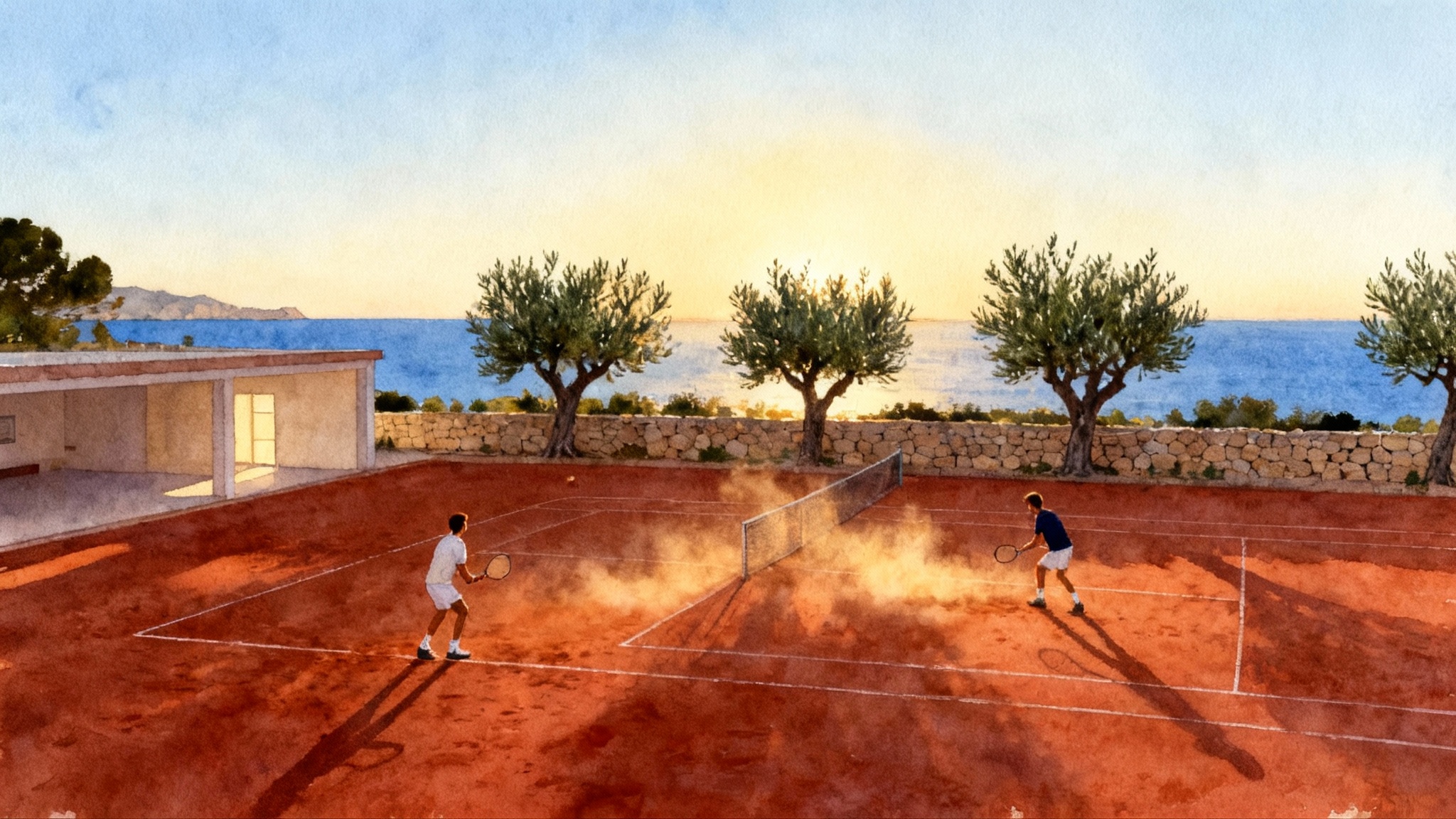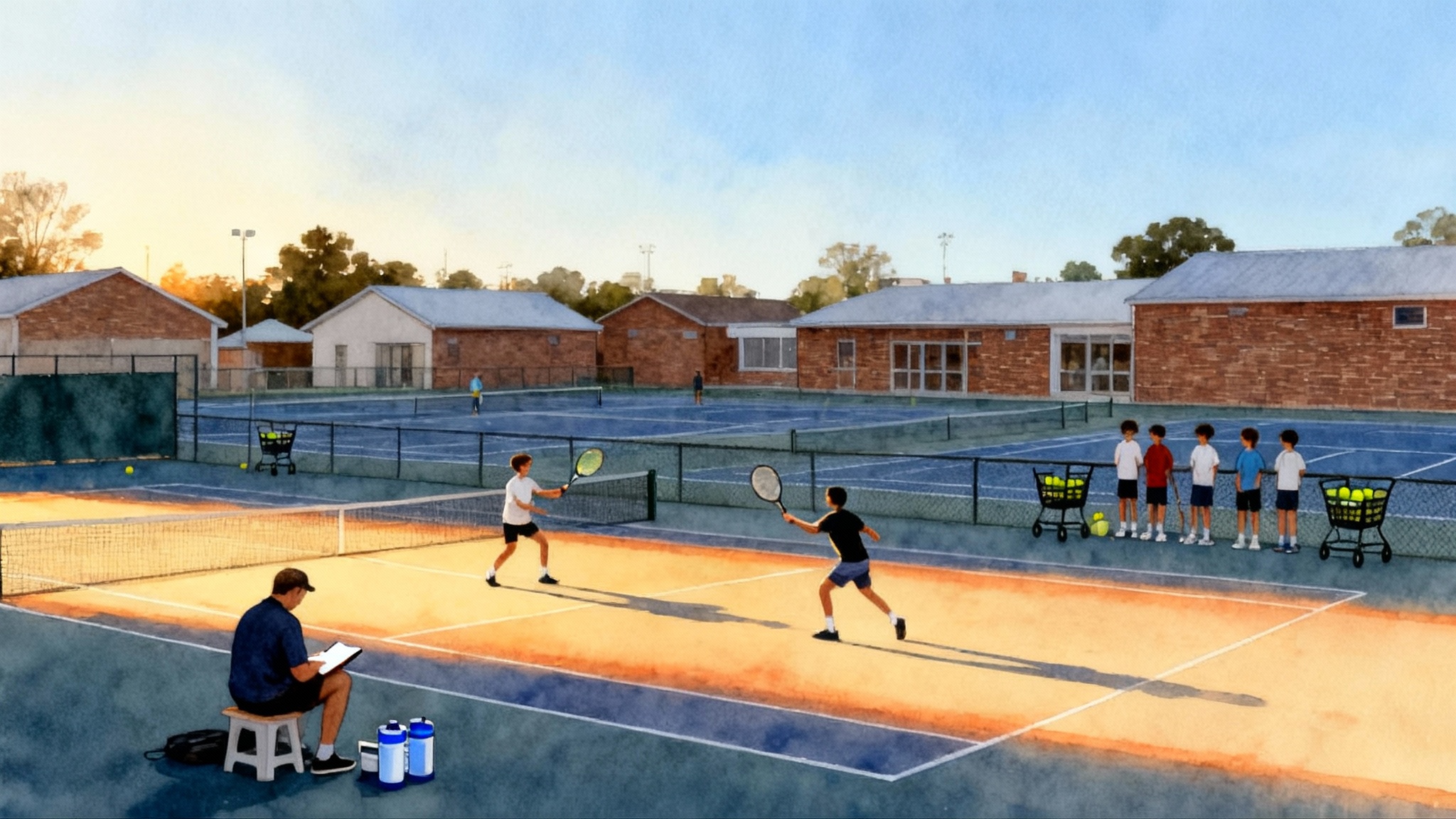From Spartak to Wimbledon: Elena Rybakina’s Club Academy Path
{"excerpt":"How a group-first, club-based education at Moscow’s Spartak Tennis Club shaped Elena Rybakina’s serve-led, composed baseline style, powered her 2018 federation switch, and mapped a practical route families can use from junior to pro."}
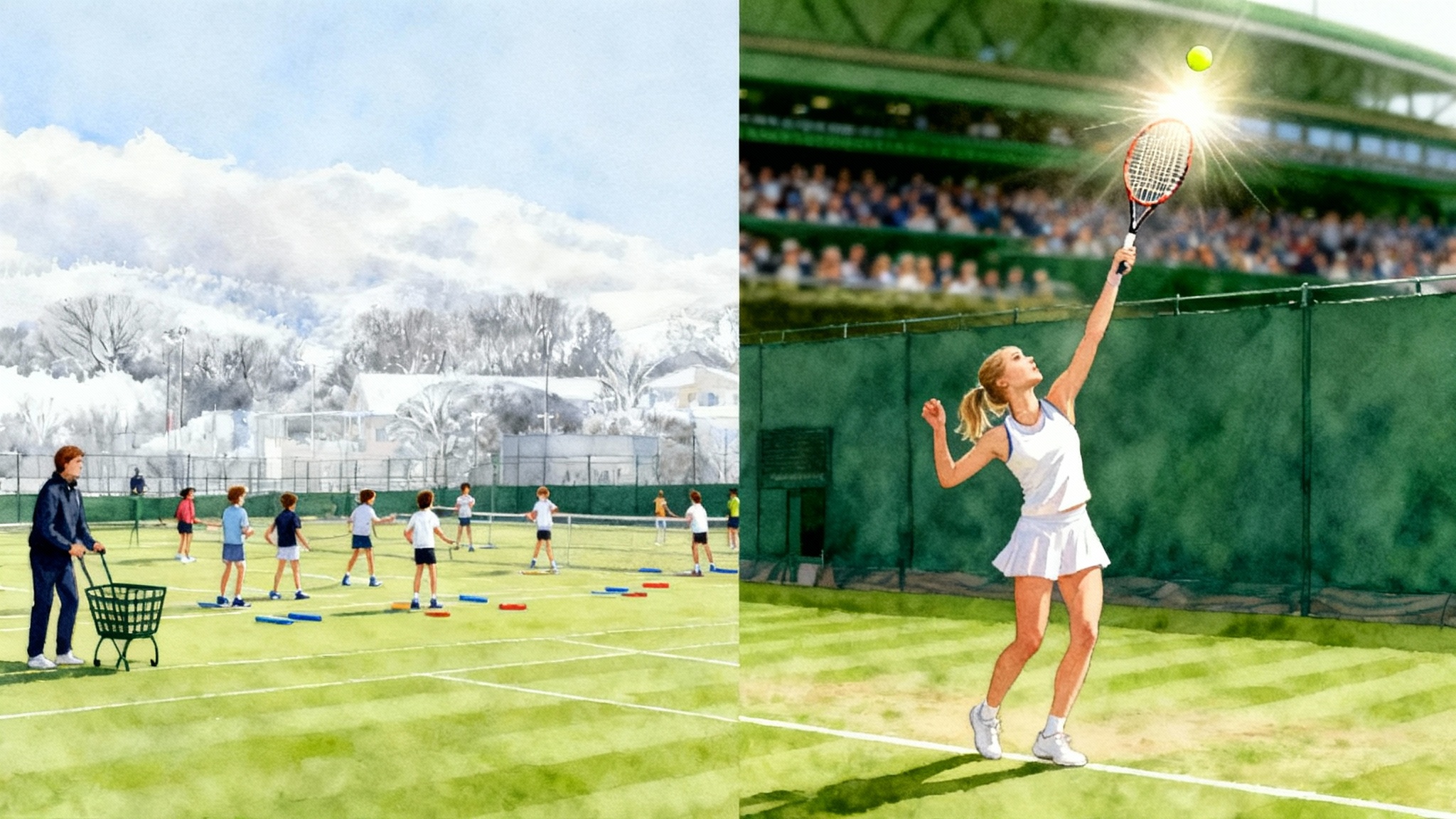
The club that built a champion
Parents often assume the fastest route is a full-time boarding academy with private lessons from dawn to dusk. Elena Rybakina’s path suggests another option. She grew up in Moscow at Spartak Tennis Club, training mainly in groups, absorbing repetitions and habits rather than stacking one-to-one hours. Her game today is instantly recognizable: a heavy, precise first serve, a calm baseline presence, and shot selection that looks simple under pressure. None of that was an accident. It came from a club culture that prizes foundation first, economy of motion, and a steady climb through levels. That base carried her to the top, lifting the trophy as the Wimbledon 2022 champion.
This story is not about shortcuts. It is about a structure that let a tall, late-blooming athlete keep her schooling, keep her costs under control, and still arrive at the sport’s summit. If you are a parent weighing club training against a boarding academy, Rybakina’s journey offers a practical model for how to build tools, not tricks.
Inside Spartak’s training rhythms
Spartak runs like a well-organized city school. Players flow through scheduled courts in blocks. Coaches are present and active, but the system is designed so that peers and structure do much of the teaching.
- Layered groups by stage, not only by age: pre-teen technique labs, teenage performance groups, and a small advanced set that rotates in with adults. Movement between groups is earned by meeting clear standards, such as serve percentage targets or neutral-ball consistency tests.
- Minimal one-to-one lessons until late adolescence: most hours are in small groups of four to six. One-to-one time is added when a player is mastering a new pattern or rehabbing an injury, or when a specific weapon needs targeted work.
- Repetition blocks with simple constraints: 10 to 15 minute stations, each with one measurable goal. Examples: 20 first serves landing deep middle third; 10 crosscourt forehands past the service line without clipping the tape; 8 backhand changes of direction off a coach-fed neutral ball.
- Live-ball sets only after standards: points begin once technical targets for the day are hit. Players learn that quality earns the right to compete.
- Tidy footwork before pace: ladders, lines, and short shuffles are default warmups. Coaches cue posture and stillness at contact, then add speed. To reinforce this habit, see our split-step mastery guide.
A typical Spartak session has three beats. First, a warmup circuit that blends mobility and activation with simple ball feels. Second, a drill block of two or three stations that isolate one skill. Third, points or sets with a narrow tactical rule, such as serving to the body on big points or opening crosscourt before taking the line. The design creates a mental loop: set a target, meet it, then test it.
The tools Spartak emphasized, and how they show up on court
- The first serve as a possession play: Rybakina’s serve is not only big, it is controlled. Group targets at Spartak emphasize zones over pure speed and often punish double faults with a reset. That builds the habit of taking pace off to hit a spot, then re-accelerating later in the game.
- Calm patterns under pressure: constraint games train a repeatable first pattern, usually crosscourt to the backhand to shrink risk, then a measured change of direction. This is why Rybakina’s rallies look uncluttered even in finals. She is not guessing, she is running a rehearsed sequence.
- Economy of motion: movement drills are short, but relentless. Players learn to set feet early, keep the head quiet, and lift through the shot. The outcome is power without a big windup, which plays on fast grass and low-bouncing indoor courts.
School first, tennis always: the weekly balance
Spartak’s model made room for regular school. That matters for families who want a safety net and for athletes who peak later physically. Here is a sample rhythm that echoes the club’s approach.
- Ages 12 to 14: five on-court sessions per week, 90 minutes each, almost all group work. Two gym blocks focused on coordination and general physical literacy: medicine-ball throws, skipping drills, bodyweight strength, basic sprint mechanics. Weekend match play is local, short, and competitive.
- Ages 15 to 17: six on-court sessions, 90 to 120 minutes, with one technical one-to-one each week only when a change is underway. Three strength and conditioning blocks: add barbell basics under supervision, resisted sprints, and shoulder care. School stays regular. Travel is regional, not global.
- Ages 17 to 19: six to eight on-court sessions across the week, with targeted one-to-one blocks capped at 20 to 30 percent of total court time. Strength and conditioning three to four days with individualization. Schooling shifts to flexible or exam blocks, but remains in the plan.
The thread is constant: group training holds the volume together, one-to-one is a scalpel, not a hammer, and academics are part of athletic development, not a rival to it.
The 2018 funding pivot that unlocked the climb
A crucial decision arrived at 18. In 2018, Rybakina changed national representation to Kazakhstan. The move was driven by funding and support: travel budgets, access to higher-level events, and a professional team around her. The shift was not a shortcut, it was a platform. With stable backing, she could enter senior events consistently, hire specialized help when needed, and choose a schedule that built confidence rather than chasing points. For a different route that relied more on an international academy base, compare with Andreeva’s academy playbook.
If you are a parent, the lesson is not about passports. It is about planning a funding pivot between 17 and 19. That is when the gap between junior results and professional viability becomes clear, and when costs rise fastest. Scholarships, federation support, club patrons, and private sponsors can be assembled like a portfolio if you start early and know what each party funds best.
Stepwise progress, not a leap
Rybakina’s rise after 2018 followed a staircase.
- Stabilize in lower-tier professional events: after strong junior results, she targeted International Tennis Federation senior tournaments to learn week-in, week-out match play.
- Jump to entry-level tour events with winnable draws: she collected matches rather than chasing only the biggest venues. Titles at this level often unlock main-draw entries at larger tournaments.
- Use a clear identity on faster courts: the serve-led, first-strike pattern travels well to grass and indoor hard. Results on those surfaces seeded belief.
- Convert deep runs into ranking jumps: once inside the top 100, the calendar begins to open. Each deep run raised her seeding, which brought more manageable early rounds.
- Apply the same patterns on the sport’s biggest stage: in 2022 she controlled serve games, stayed patient on return, and played big points with a simple, trained plan.
Since then, she has spent extended periods ranked among the sport’s leaders. For current details, see Rybakina’s official WTA profile.
When a club-based academy can beat boarding
A club model shines when three conditions exist.
- Strong peer density: if your local club can field pods of four to eight players at your level, group practice will give you more live reps than private lessons.
- Proven adult leadership: look for a head coach who curates stations, sets measurable standards, and rotates assistants. Titles and former player status help, but day-to-day organization is decisive.
- Parent capacity to manage logistics: travel, school coordination, and strength and conditioning appointments take planning. If your family can build a schedule, the savings from not boarding can be reinvested in specialists. For a community-first example, study the JTCC community pathway.
Boarding still makes sense when the local ecosystem is too thin, when a player is highly introverted and needs controlled one-to-one time to learn, or when school flexibility is impossible to achieve locally. The choice is not moral, it is logistical.
How to balance court time, conditioning, and school
Use a three-column planner.
- Column 1: court objectives. List two technical targets for the week, one tactical habit, and one match-play goal. Example: improve wide serve accuracy to the ad court, lift backhand contact height, win 60 percent of short return points, and play one best-of-three set every other day.
- Column 2: strength and conditioning. For 12 to 14, emphasize coordination and tendons. For 15 to 17, add progressive strength and landing mechanics. For 17 to 19, individualize with a performance coach who understands tennis calendars and travel fatigue.
- Column 3: academics and recovery. Lock in class hours, homework windows, and sleep targets. Protect one non-tennis block each day for mental space. The brain learns movement during sleep, so school and training compete less than most parents think.
Practical ratios that mirror a Spartak-style week:
- Under 15: about 6 to 7 hours court, 3 hours strength and conditioning, full school week.
- Ages 15 to 17: about 8 to 10 hours court, 4 to 5 hours strength and conditioning, targeted exam flexibility during tournament weeks.
- Ages 17 to 19: about 10 to 12 hours court, 5 to 6 hours strength and conditioning, modular school program with term breaks arranged around key events.
Planning a funding pivot at 17 to 19
Treat funding like a diversified budget, not a single source.
- Federation support: understand what your national body funds. Some cover travel and coaches for a set number of weeks. Others pay entry fees or offer training camps. Apply a year in advance.
- Club patrons and scholarships: local clubs often have quiet donors who prefer to back a specific junior. Prepare a two-page brief with results, rankings, a sample budget, and what you can offer: clinics, appearances, mentoring younger players.
- Private sponsors: local businesses value community stories. Offer a simple package: logo on warmups, quarterly updates, and a clinic for staff families.
- Family capital and rules: decide early how much the family will invest and what milestones trigger pauses or new discussions. Examples: top 30 junior ranking by 17, first professional points by 18, top 300 by 19.
Create a laddered budget for one year:
- Base operations: stringing, equipment, club fees, strength and conditioning. Estimate and fund fully.
- Travel block A: ten to twelve local or regional events with car or short flights. Target this first.
- Travel block B: six to eight higher-level events with coach travel. Fund only if performance benchmarks open main draws or if you earn wild cards.
- Specialist block: physiotherapy, nutrition consults, and targeted technical blocks. Use surplus from results or specific sponsorships.
The coach’s role across the climb
Rybakina’s early guidance included respected coaches from Moscow, such as Andrei Chesnokov, whose playing career and coaching experience brought authority to group environments. The important takeaway for parents is what that kind of figure provides in a club setting:
- Standards and simplicity: a coach with elite experience can strip drills to their essence and set clear thresholds.
- Emotional neutrality: group-first cultures teach athletes to ride momentum shifts without drama. You see this in Rybakina’s posture between points and her slow breathing rituals before big serves.
- Timing of specialization: the coach knows when to finally lean into one-to-one work, often at the point where a player is ready to weaponize a strength, not before.
If your club lacks a Chesnokov-level mentor, you can approximate the effect by hiring an experienced consultant two or three times per year to audit your plan, watch practice, and set the next quarter’s targets. The day-to-day can remain group-centered.
A concrete, Spartak-style week families can copy
Monday
- Morning: warmup circuit, serve targets to the body, crosscourt backhand tolerance drill
- Afternoon: class, homework
- Evening: sprint mechanics, deceleration drills, shoulder care
Tuesday
- Morning: return plus first ball patterns, short-set match play to four games
- Afternoon: class
- Evening: general strength session, mobility
Wednesday
- Morning: one-to-one technical block if needed, otherwise rotation through approach-and-finish stations
- Afternoon: class, recovery nap
- Evening: light hitting, overhead footwork
Thursday
- Morning: serve and second-ball sequencing, plus tiebreak sets
- Afternoon: class
- Evening: power session with medicine balls, jump training
Friday
- Morning: pattern rehearsal under fatigue, two-on-one defensive drills
- Afternoon: class
- Evening: pre-tournament hit, packing and logistics
Weekend
- Local tournament or in-house match day
- Sunday review: note targets met, reset goals for next week
Keep the entire plan on a single page. If you cannot explain the week to your player in five minutes, it is too complicated.
Red flags, and the fixes
- Too many private lessons too soon: if one-to-one exceeds one third of court time before late adolescence, skills may not hold under pressure. Fix by moving technical work into group stations with measurable targets.
- Overtravel at 15 to 16: long trips to chase points burn budget and school capital. Fix by playing within your region until consistent deep runs demand a step up.
- Strength without skill: adding heavy lifting before mechanics are clean can lock in poor patterns. Fix by prioritizing landing mechanics, posture, and tempo first.
- No benchmarks for funding: if sponsors or family do not know what progress looks like, hard talks arrive late. Fix by publishing three public milestones for the year and reporting monthly.
What this means for parents
Elena Rybakina’s journey shows that club-based academies can rival, and sometimes beat, boarding models when the local ecosystem has density and leadership. The Spartak template is repeatable: group-first training, technical targets before points, calm patterns under pressure, and a narrowly timed shift to one-to-one work. Pair that with a funding pivot at 17 to 19 that blends federation help, club patrons, and local sponsorships, and you can stretch resources long enough for a late physical bloom.
Every family’s map will differ, but the principles travel well. Build tools that survive stress. Let group training carry the volume. Use private coaching like a scalpel. Align strength and conditioning with the calendar. Protect school so the brain and body grow together. Plan your funding as a portfolio with milestones, not a wish.
The result is a player who looks simple when the moment is loud. That is what you saw on Centre Court in 2022, and what you see in the steady rhythm of a top contender today.
Conclusion
A champion’s path does not need to be exotic. It needs to be coherent. Spartak supplied coherence. The serve became a possession play, patterns stayed simple, and one-to-one work was used at the right time. Add a smart funding pivot and a steady schedule, and the door to the biggest stages opens. Parents can borrow this blueprint today, adapt it to their own club, and build a game that holds up when it matters most.
